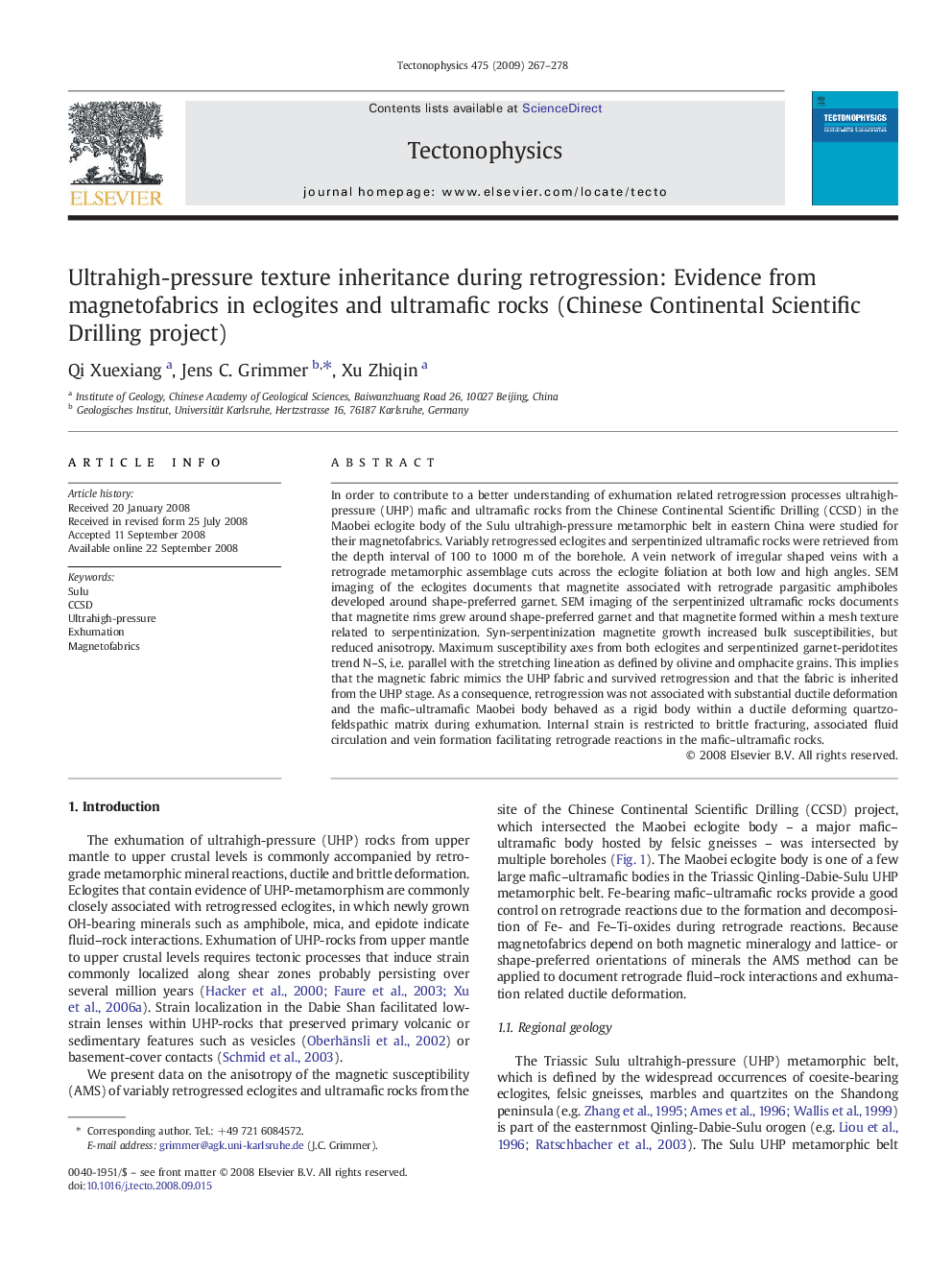| Article ID | Journal | Published Year | Pages | File Type |
|---|---|---|---|---|
| 4694053 | Tectonophysics | 2009 | 12 Pages |
Abstract
In order to contribute to a better understanding of exhumation related retrogression processes ultrahigh-pressure (UHP) mafic and ultramafic rocks from the Chinese Continental Scientific Drilling (CCSD) in the Maobei eclogite body of the Sulu ultrahigh-pressure metamorphic belt in eastern China were studied for their magnetofabrics. Variably retrogressed eclogites and serpentinized ultramafic rocks were retrieved from the depth interval of 100 to 1000Â m of the borehole. A vein network of irregular shaped veins with a retrograde metamorphic assemblage cuts across the eclogite foliation at both low and high angles. SEM imaging of the eclogites documents that magnetite associated with retrograde pargasitic amphiboles developed around shape-preferred garnet. SEM imaging of the serpentinized ultramafic rocks documents that magnetite rims grew around shape-preferred garnet and that magnetite formed within a mesh texture related to serpentinization. Syn-serpentinization magnetite growth increased bulk susceptibilities, but reduced anisotropy. Maximum susceptibility axes from both eclogites and serpentinized garnet-peridotites trend N-S, i.e. parallel with the stretching lineation as defined by olivine and omphacite grains. This implies that the magnetic fabric mimics the UHP fabric and survived retrogression and that the fabric is inherited from the UHP stage. As a consequence, retrogression was not associated with substantial ductile deformation and the mafic-ultramafic Maobei body behaved as a rigid body within a ductile deforming quartzo-feldspathic matrix during exhumation. Internal strain is restricted to brittle fracturing, associated fluid circulation and vein formation facilitating retrograde reactions in the mafic-ultramafic rocks.
Keywords
Related Topics
Physical Sciences and Engineering
Earth and Planetary Sciences
Earth-Surface Processes
Authors
Qi Xuexiang, Jens C. Grimmer, Xu Zhiqin,
